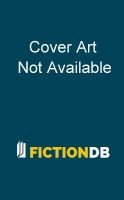- Welcome to FictionDB, Guest
- | My Account
- | Help

A Dracula Handbook — Elizabeth Miller
A DRACULA HANDBOOK
A Dracula Handbook provides succinct and accurate information about Dracula. Written for a general readership, the book should appeal to aficionados, students and the just-plain-curious. Using question/answer format, the book covers a range of topics: the origins of the vampire myth; the life of Bram Stoker, author of Dracula (1897); the novel, its genesis and sources; the historical figure (Vlad the Impaler) whose nickname Stoker borrowed for his Count; an examination of the connection between Vlad and Count Dracula; the phenomenal impact the novel has had since its publication; and an overview of interpretations of the book. Also included is a comprehensive reading list.
Here are some of the many questions that are directly answered in the book:
What are the roots of vampire lore?
How did vampires move from folklore to literature?
What do we know about the actual writing of Dracula?
Where did Bram Stoker find his information about vampires?
Are there any autobiographical elements in Dracula?
Did Dracula originate in a nightmare?
What do we know of the relationship between Stoker and his wife?
Did Stoker die of syphilis?
How did Count Dracula become a vampire?
Does Count Dracula have any redeeming qualities?
How was the novel Dracula received when published in 1897?
What did Stoker himself say about the novel?
Why did Stoker name his vampire Dracula?
Why did he select Transylvania as the vampires homeland?
How much did Stoker really know about Vlad the Impaler?
Was Vlad ever associated with vampire legends?
What are our main sources of information about Vlad?
Why do many Romanians consider Vlad to be a national hero?
Which of the Dracula movies is the best adaptation of Stokers novel?
What impact has Dracula had on subsequent vampire fiction?
Why does Count Dracula have such enduring appeal?
How do Romanians feel about Dracula tourism in their country?
Is there a real Castle Dracula?
What are some of the interpretations of Dracula?
Is Dracula a classic?
And many, many more! Depending on the complexity of the questions, the answers range from 5-6 lines to several pages. At the end of each chapter there is a shortlist for further reading. At the end of the book there is a comprehensive Bibliography.
A Dracula Handbook provides succinct and accurate information about Dracula. Written for a general readership, the book should appeal to aficionados, students and the just-plain-curious. Using question/answer format, the book covers a range of topics: the origins of the vampire myth; the life of Bram Stoker, author of Dracula (1897); the novel, its genesis and sources; the historical figure (Vlad the Impaler) whose nickname Stoker borrowed for his Count; an examination of the connection between Vlad and Count Dracula; the phenomenal impact the novel has had since its publication; and an overview of interpretations of the book. Also included is a comprehensive reading list.
Here are some of the many questions that are directly answered in the book:
What are the roots of vampire lore?
How did vampires move from folklore to literature?
What do we know about the actual writing of Dracula?
Where did Bram Stoker find his information about vampires?
Are there any autobiographical elements in Dracula?
Did Dracula originate in a nightmare?
What do we know of the relationship between Stoker and his wife?
Did Stoker die of syphilis?
How did Count Dracula become a vampire?
Does Count Dracula have any redeeming qualities?
How was the novel Dracula received when published in 1897?
What did Stoker himself say about the novel?
Why did Stoker name his vampire Dracula?
Why did he select Transylvania as the vampires homeland?
How much did Stoker really know about Vlad the Impaler?
Was Vlad ever associated with vampire legends?
What are our main sources of information about Vlad?
Why do many Romanians consider Vlad to be a national hero?
Which of the Dracula movies is the best adaptation of Stokers novel?
What impact has Dracula had on subsequent vampire fiction?
Why does Count Dracula have such enduring appeal?
How do Romanians feel about Dracula tourism in their country?
Is there a real Castle Dracula?
What are some of the interpretations of Dracula?
Is Dracula a classic?
And many, many more! Depending on the complexity of the questions, the answers range from 5-6 lines to several pages. At the end of each chapter there is a shortlist for further reading. At the end of the book there is a comprehensive Bibliography.
Genres
Click on any of the links above to see more books like this one.

